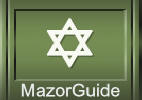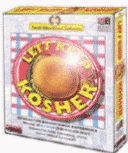Zei Gezunt with Tai Chi
Editor: Yael
Rosenberg, RN, B.S.H
TAI CHI
Description: Tai Chi
Statistical Information
Symptoms Treated
Questions to ask the Practitioner
General Tips
Products and Services
Books and Publications
Description
Tai Chi is an ancient Chinese form of exercise that is characterized by controlled and slow movements and breathing while meditating to condition the body for relaxation and promote health and longevity. Tai Chi is also used as a form of martial arts for self defense.
Practitioners utilize the same concept as acupuncture, that is
stimulation of trigger points on the surface of the body in an attempt
to balance chi (energy flow) and restore the bodys equilibrium While
acupuncture utilizes needles to stimulate these points, acupressure
involves placing gentle pressure by hand, fingers, elbows or with an
assortment of devices.
There are many styles of Tai Chi which include some of the following:
Chen
Yang
Wu
Sun
Woo
Lee
Guang Ping
Statistical studies show the following:
Tai Chi is the one of the fastest growing exercise form among young Americans, second only to yoga. Though both men and women have shown a greater interest in the United States, it is reported that women outnumber men in Tai Chi classes.
Conditions and Symptoms
Tai Chi has many health benefits that include the following among others:
It is often used as a adjunct treatment for many painful chronic conditions such as: fibromyalgia, arthritis and digestive disorders.
Since it is a weight bearing form of exercise it can be very helpful for bone health (especially for women after menopause)
Beneficial for falls prevention as it improves balance and coordination
Boosts energy and stamina utilized for chronic fatigue syndrome
Increases strength
Improves sleep
Reduces stress, anxiety, and depression
Improves muscle tone and flexibility
Alleviates pain and stiffness
Some studies have shown tai chi helping kids with ADHD
It can be used as an alternative to the western aerobic exercises aerobic exercises
Questions to ask the Practitioner
How many years experience have you had utilizing this fitness and healing method
What is your success rate
Certificates and Licenses
References
General Tips
Seek the advice of your health provider before embarking on any form of exercise.
Wear loose-fitting, comfortable clothing
Do not eat anything for 30 minutes before or after the practice.
Find a quiet, comfortable place to practice where you will not be disturbed.
Keep your limbs relaxed and limp.
Make sure your breathing is synchronized with your slow movements
Always keep your head straight while focusing to the middle when performing tai chi movements
Make sure your movements are fluid and constant fitting seamlessly one to another
List of Products & Services
Tai Chi Uniform (Clothing) - White, Red, Blue and Black
BOOKS & Publications
Step-By-Step Tai Chi (Paperback)
Complete Idiot's Guide to T'ai Chi and QiGong (Book & DVD) [ILLUSTRATED] (Paperback)
Sunrise Tai Chi (YMAA) DVD (2005)
David Carradine's AM & PM Tai Chi Workout for Beginners (1999)
T'ai Chi for Health: Yang Short Form 37 Form
Tai Chi Fundamentals: For Mastering Tai Chi Basics (2003)

Alternative Treatment Methods
Acupressure
Acupuncture
Aromatherapy
Biofeedback
Chiropractic Treatment
Guided Imagery
Herbal Remedies
Homeopathy
Hypnosis
Magnetic Therapy
Massage Therapy
Meditation
Qigong
Reflexology
Reiki
Tai Chi
Therapeutic Touch
Vitamin Therapy
Yoga
|





